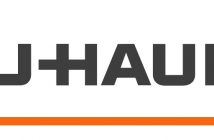(Photo | Pexels)
Effective January 1, the SECURE Act increased Internal Revenue Service (IRS) penalty authority when a plan sponsor files a late or materially incomplete Form 5500. Under the increased penalty authority, the maximum per-day penalty that the IRS can impose increased from $25 per-day with a maximum penalty of $15,000 per plan year, to a maximum per-day penalty of $250 and a plan year maximum of $150,000. In other words, maximum penalties are now 10 times higher than they were in 2019.
Even with the increased penalty structure, IRS penalties are still far lower than those available to the Department of Labor (DOL), but they nevertheless serve as a good reminder that it is worth an employer’s time to learn a bit about Form 5500s, what they do and when they are required.
Form 5500s are the forms that plan sponsors use to report details about their employee benefit plans to the IRS and the DOL. While exceptions exist for certain health and welfare plans (more on this below), most employee benefit plans covered by the Employee Retirement Income and Security Act (ERISA) are required to file a Form 5500 annually. What does “most employee benefit plans” mean? The answer is straightforward when it comes to retirement plans but less so on the health plan side.
Looking first at retirement plans, all qualified plans and funded deferred compensation plans covered by ERISA must file (Although, a simplified form is available for certain plans sponsored by small employers). Qualified plans are the most common retirement plan type to trigger this requirement. Qualified plans include 401(k) plans, as well as deferred compensation plans that do not allow employee contributions, and defined benefit plans. Plans sponsored by a governmental entity or a church are exempt from ERISA, but any other employer, regardless of size, will be governed by ERISA. Employers that participate in a union pension plan do not need to file a Form 5500 associated with that plan — the pension trust will take care of the filing — but any 401(k)s or other retirement plans sponsored by the employer should be considered for Form 5500 coverage. If an employer uses a third-party administrator to manage its 401(k) plan, the third-party administrator typically prepares this filing. Since most employers utilize third parties to assist in managing their retirement plans, it is unusual for an employer to miss filing a retirement plan Form 5500.
However, the same cannot be said for health plans. While all retirement plans, regardless of size, are subject to Form 5500 requirements, some health and welfare plans are entirely exempt. This limited exemption often causes employers to miss filings following a period of growth.
Two types of health and welfare plans are required to file a Form 5500: (1) funded plans with any number of participants and (2) funded, unfunded and insured plans with 100-plus participants as of the first day of the plan year covered by a Form 5500 filing. In plain language, this means that if an employer’s health plan claims are paid by an insurance company (e.g., Kaiser, Regence or Providence), a Form 5500 is only required if the plan has 100 or more participants as of the first day of an employer’s plan year. Likewise, if an employer’s health plan claims are paid by the employer directly (self-insured), a Form 5500 is only required if the claims are paid out of a separate fund established to pay health plan claims, or if the participant count is 100 or more. If claims are paid out of an employer’s general assets, a Form 5500 filing is only required if the participant count is 100 or more as of the first day of the plan year.
An important point here is that “participants” in this context does not mean number of people in the plan, because dependents are not included in the count. In addition, it is not every eligible employee who is counted, it is only those actually covered under the plan — participants receiving benefits — who are counted. Many employee benefits brokers keep an eye on this count for employers sponsoring health and welfare plans, but for those employers with employee counts nearing 100, it is advisable to check with relevant plan professionals to determine if a Form 5500 is required or will be in future years.
Another way that Form 5500 filings can be complex for health and welfare plans is the question of how many Form 5500s to file. If an employer offers employees several health plan options as well as a separate dental and vision plan, the employer may well wonder if it needs to file a Form 5500 for each of these plans, and the answer to this may well be yes. Where the plans are offered separately and have not been “wrapped” into a single plan aggregating the separate plan benefits into a single ERISA plan, separate filings are indeed required. However, many employers avoid this requirement by having their separate benefits aggregated into a single ERISA plan using a wrap document. Once the plans have been wrapped, a single Form 5500 can be filed for all wrapped plans. Your employee benefits broker or one of our employee benefits attorneys can give you more information about the cost and process of wrapping plans.
One thing we know about regulatory agencies is that they are often looking for revenue to support their operations. With that in mind, the IRS’s new and increased penalty authority could mean that it will be paying more attention to Form 5500 filings and may be looking to more readily impose penalties. However, you can stay ahead of these enforcement efforts by speaking with your plan professionals to ensure that your filings are in order now and in the future.
Gabrielle Hansen and Iris Tilley are employment attorneys with Barran Liebman LLP, where they represent management in a variety of ERISA and employment matters. For questions, contact Gabrielle at 503-276-2112 or ghansen@barran.com.





